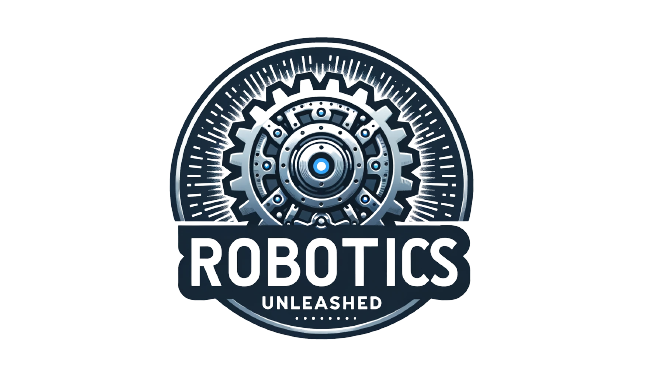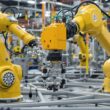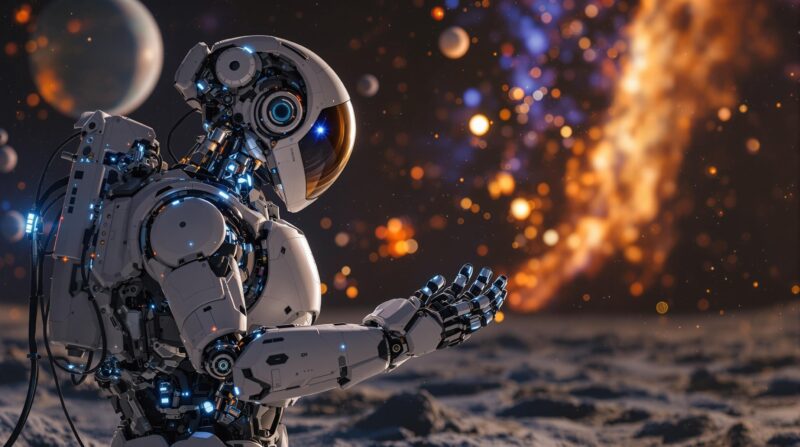Space exploration has entered a revolutionary phase where AI-powered robots are overcoming the extreme challenges of deep space missions without human intervention. These advanced machines can navigate autonomously, withstand deadly radiation, and make split-second decisions despite communication delays of up to 24 minutes, fundamentally changing our approach to exploring the cosmos.
Key Takeaways
- The deep space robotics market is projected to grow from $1.564 billion to $3.329 billion by 2033, reflecting increased investment in autonomous space systems
- AI enables robots to make critical real-time decisions despite the significant Earth-to-Mars communication delay of up to 24 minutes
- Specialized robots like Gitai’s Inchworm can perform repairs in radiation zones too dangerous for human astronauts
- Robot precursor missions reduce human exploration costs by 30-50% while identifying safe landing sites
- Future space robotics may include self-replicating systems capable of building large-scale infrastructure on other worlds
Market Growth Drives Innovation in Space Robotics
The financial momentum behind space robotics is pushing technical boundaries and opening new possibilities for deep space exploration. Currently valued at $1.564 billion, the deep space robotics market is on track to more than double by 2033, reaching $3.329 billion at an impressive 8.2% compound annual growth rate. This growth outpaces even the broader space robotics sector, which itself is expanding at 8.8% annually.
What’s driving this surge? Satellite servicing accounts for over 40% of near-space robotics revenue, while the deep space segment is growing faster at 10.3% CAGR. The push for autonomous systems that can function in extreme environments continues to fuel investment, with NASA’s OSAM-1 mission demonstrating how robots can reduce costs through autonomous satellite refueling.
This economic expansion reflects a fundamental shift in how space agencies and private companies approach mission planning. The financial benefits of robotic explorers are clear – they don’t need life support, can withstand harsh conditions, and can operate for years without human intervention. This makes them cost-effective alternatives to human missions while still advancing our scientific understanding of the solar system.

Autonomous Navigation Conquers Communication Delay Challenge
Perhaps the most significant hurdle for deep space missions is the communication delay between Earth and distant spacecraft. When a signal takes up to 24 minutes to reach Mars, real-time human control becomes impossible. This is where AI transforms space exploration completely.
Mars rovers like Perseverance use sophisticated machine learning algorithms to navigate Martian terrain independently. These systems process terabytes of planetary data in real-time, enabling the rover to make split-second decisions about path planning, hazard avoidance, and scientific sampling without waiting for instructions from Earth.
The Ingenuity helicopter takes this autonomy further, using machine learning for aerial terrain mapping in the thin Martian atmosphere. The European Space Agency’s AI Lab has integrated artificial intelligence across all mission phases, including astronaut training through augmented reality systems.
These technical breakthroughs rely on advanced software frameworks. The Robot Operating System (ROS) and Gazebo simulations enable robots to plan paths in low-light environments, while the “Scan-N-Plan” approach developed by Southwest Research Institute uses 3D modeling for precision tasks like collecting samples from asteroids with uncertain surfaces.
Robotic Solutions for Space Hazards and Human Limitations
Space presents numerous dangers that robots can withstand far better than humans. The Gitai Inchworm Robot exemplifies this advantage by performing extra-vehicular repairs in high-radiation zones that would be deadly to astronauts. These specialized machines can work continuously in fatal radiation conditions without risk to human life.
Radiation-hardened systems developed by SwRI can withstand extreme temperature swings, solar particle events, and galactic cosmic rays – conditions that would quickly overwhelm conventional electronics. This radiation resistance is crucial for missions to places like Jupiter’s moon Europa or Saturn’s moon Titan.
Zero-gravity environments present another challenge that robots handle through specialized engineering. The OSAM-1 mission demonstrates how robots can conduct in-orbit assembly for projects like the Lunar Gateway, performing complex construction tasks that would be difficult for humans in microgravity.
The modular design of robots like those from Gitai offers significant advantages over traditional single-purpose systems. These machines can change tools and adapt to different tasks, making them more versatile for the unpredictable challenges of deep space exploration.
Industry Leaders Advancing Space Robotics Technology
Several companies stand at the forefront of space robotics development. Maxar Technologies specializes in satellite servicing robots and the SPIDER robot for in-orbit assembly operations. Honeybee Robotics focuses on drilling systems for lunar regolith, including the Planetary Deep Drill specifically designed to extract subsurface ice on Mars.
Northrop Grumman leads in autonomous spacecraft with their Mission Extension Vehicle (MEV), which can extend the operational life of satellites in orbit. These industry innovations are complemented by emerging technologies like swarm robotics, which enables collaborative robots to tackle large-scale tasks such as lunar base construction.
Digital twin technology creates virtual replicas of spacecraft for risk assessment and maintenance planning. Force feedback control systems allow for delicate operations such as solar panel repair, while SwRI’s radiation-hardened processors have reduced hardware failure rates by 60% in deep space conditions.
These technological advances represent a new era in intelligent machines that can function autonomously in the most challenging environment humans have ever attempted to explore.
The Essential Partnership: Robots Enable Human Exploration
Historical evidence clearly shows that robotic missions pave the way for human exploration. The Apollo Program relied heavily on robotic precursor missions – the Lunar Orbiter and Surveyor spacecraft – to ensure successful moon landings. During 1966-1967, Lunar Orbiter missions mapped 99% of the Moon’s surface before humans ever set foot there.
This pattern continues today with the Mars Sample Return Campaign, where the Perseverance rover is collecting samples for future retrieval by human crews. These robotic missions significantly reduce costs, with estimates showing 30-50% savings compared to crewed alternatives. Perseverance cost $2.7 billion versus an estimated $10+ billion for a human Mars mission.
Beyond cost savings, AI minimizes astronaut workload by automating routine tasks like life-support monitoring on the International Space Station. This partnership between humans and robots maximizes scientific return while minimizing risk to human life – a model that will continue to shape future exploration strategies.
AI-Driven Data Analysis Transforms Scientific Discovery
The scientific benefits of AI-powered robotics extend far beyond physical exploration. Modern space robots process and analyze massive datasets from their instruments in real-time, using machine learning algorithms to identify scientific targets and prioritize research objectives autonomously.
Deep learning enables pattern recognition in planetary features that human analysts might miss, while advanced imaging analysis offers unprecedented detail in astronomical observations. This capability is crucial when communication bandwidth from deep space is limited and expensive.
Predictive analytics helps forecast mission challenges and scientific opportunities, allowing for more efficient use of limited resources. The result is a dramatic increase in scientific output from each mission, as robots can continuously collect and process data without human fatigue or cognitive limitations.
Future Frontiers: Next Generation Space Robotics
The future of space robotics promises even more revolutionary capabilities. Self-replicating robotic systems could potentially enable large-scale infrastructure development on other worlds, using local resources to build habitats and research facilities before humans arrive.
Quantum computing integration may dramatically improve onboard decision-making capabilities, while bio-inspired robotic designs show promise for exploring extreme environments like the subsurface ocean of Europa. Some researchers envision artificial general intelligence someday enabling fully autonomous deep space exploration without any human guidance.
International cooperation and standardization efforts are creating new frameworks for robotic space missions, ensuring compatibility between systems from different nations. Emerging technologies like neuromorphic computing may revolutionize robot adaptability in unpredictable environments, bringing us closer to a future where robots serve as our advanced explorers throughout the solar system.
As we continue pushing the boundaries of space exploration, the partnership between artificial intelligence and robotics will remain essential to our success in understanding the cosmos.











